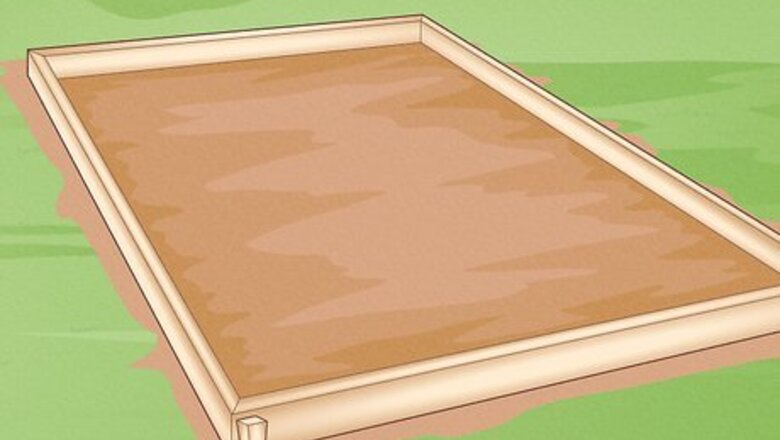
views
Spreading the Concrete

Build a formwork for your concrete surface. Before you begin tamping or even pouring the concrete, you’ll need to have forms in place. Nail together a series of boards to fit the area you’ll be concreting, dividing the different sections as needed. Use a level to make sure the surface comes out perfectly flat. Formwork structures serve to mark the perimeter of the concrete surface and contain the wet concrete mix while it’s being spread and compacted. Some digging may be required if you want the concrete to be at or below ground level.
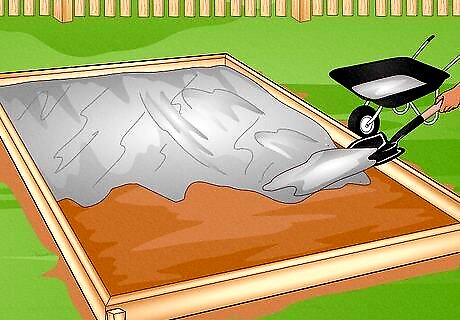
Pour the concrete. Start at one corner of the formwork and work your way across so that the concrete is piled into one “row.” Then, begin pouring the next row and move in the opposite direction. Don’t worry if it doesn’t look very neat—you’ll be spreading and smoothing it later. A cement truck with an extendable pour spout is the easiest way to pour concrete over a large area. For small spaces or indoor projects, transfer the mixed concrete to a wheelbarrow and shovel it into your formwork a little at a time.
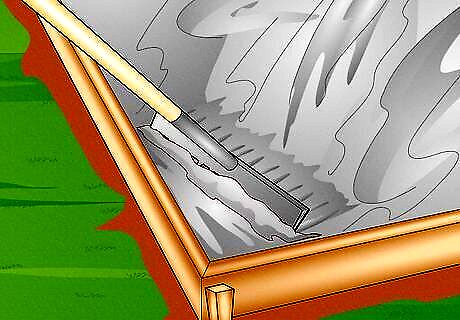
Spread the wet concrete to the edges of the forms. Use a concrete rake or garden hoe to push and drag the freshly-poured concrete throughout the formwork. It’s important that the forms get filled in completely so that the concrete is flush the corners. Failure to spread the concrete all the way to the edges of the forms could result in structural weakness or make the finished surface appear sloppy and incomplete.

Work out obvious inconsistencies. Break up any clumps or overly thick areas you come across with the blade of the rake to ensure that the finished concrete has a more uniform texture. You should also look closely to identify gaps and thin spots and cover these before the concrete has time to dry. Adjust the height of the rake as you spread to achieve the desired thickness. Make sure the thickness of the concrete stays the same from one end of the formwork to the other.
Compacting the Concrete
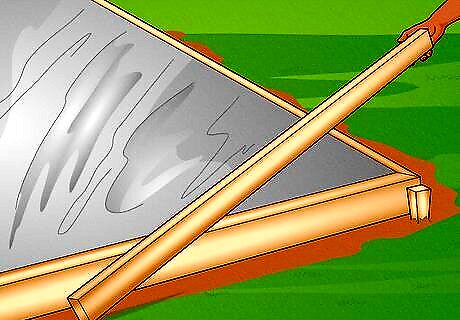
Choose a tamping tool. Tampers come in many shapes and sizes. The most basic tamper available is a simple 2x4—on the other end of the spectrum, you have tools like concrete rollers and specially designed tamping platforms. Each comes with its own set of pros and cons, but they’ll all get the job done, so be sure to select the one that best fits the needs (and budget) of your project. A piece of scrap 2x4 costs next to nothing, but requires more intensive labor and an up-close-and-personal approach to application. Tampers should only be used on “low slump” or harsh mix types of concrete, in which the coarse aggregate materials don’t sink naturally.
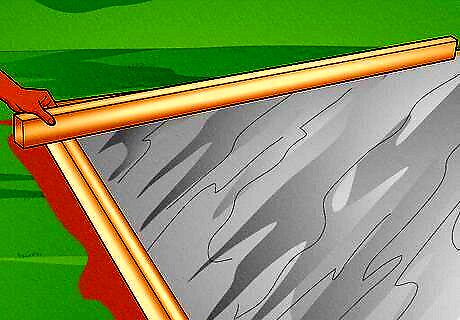
Start at the far end of the formwork. Set the flat face of the tamper into one corner of the form. As you did when you were pouring the concrete, you’ll want to proceed from the edges inward. If you’re using a 2x4, make sure you have it turned so that the widest side is facing down. Move it side to side across the top of the wet concrete to smooth it out.
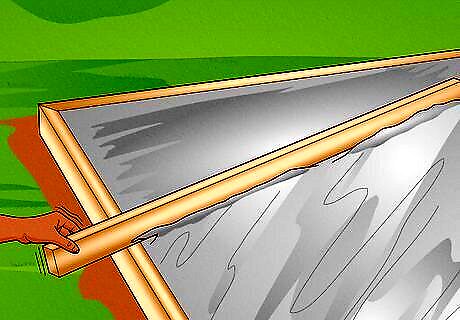
Press the tamper into the wet concrete. Use the tamper to pat the concrete repeatedly, moving in a straight line down one section of the formwork at a time. You only need to apply a moderate amount of pressure at a time—mashing the concrete too forcefully will just displace it, resulting in an uneven thickness. The key to successful tamping is to use even pressure throughout the entire surface. The compaction process will distribute the aggregate material throughout the concrete mixture, resulting in a denser, sturdier surface. Concrete rollers are weighted so that no extra muscle is required—just drag them along and let them work their magic. Dip the tamper into a bucket of water occasionally so it doesn’t drag on the wet concrete.

Work your way from one end of the formwork to the other. Once you’ve finished one section of the concrete, turn around and continue tamping in the opposite direction. Start in one corner and work your way across the entire area, using long, sweeping strokes. That way, you can avoid leaving streaks, footprints, or other flaws. Repeat until you’ve finished the entire surface. Be careful not to press too hard or move too quickly, as this can cause the concrete to shift and create unevenness. Make sure you’re walking backward at all times and use the tamper to cover your tracks. If you happen to make a mistake, just go back over the area until it’s no longer visible. Tap on the form boards with a rubber mallet to make the concrete settle into any voids.
Leveling and Finishing the Concrete Surface
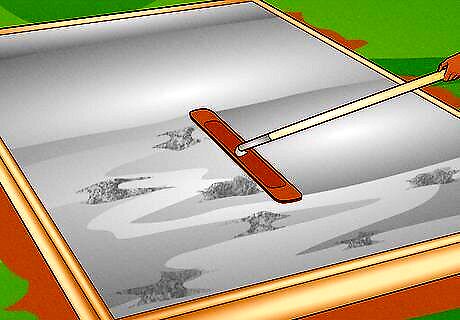
Smooth the concrete with a float. Draw the float over the surface of the concrete just deep enough to reshape the outermost layer. Use wide, circular motions, or run it back and forth like a saw. This will leave the concrete with a seamless low-slip finish. A float is any flat piece of wood or metal used to smooth newly laid concrete. They are sometimes available for purchase in hardware stores and home improvement centers. Alternatively, you can also use a hand trowel or short section of 2x4 to level concrete. If you used a 2x4 tamping the concrete, use a different board when you smooth.
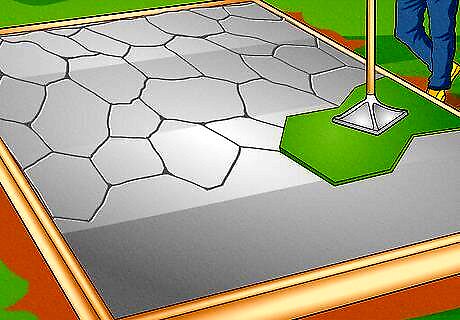
Add some surface texture. If you want to make your concrete driveway or footpath a little more attractive, look for tampers with eye-catching designs on their undersides. These create shallow impressions that enhance the look of plain unfinished concrete. You can also find pre-molded stamps and overlays that can be applied directly to wet concrete. Some of the textural elements you can use to give concrete a boost of character include swirls, diamonds, grooves, and symmetrical brick-like patterns. Make sure the stamp has a release agent on it so wet concrete doesn’t stick in the design.
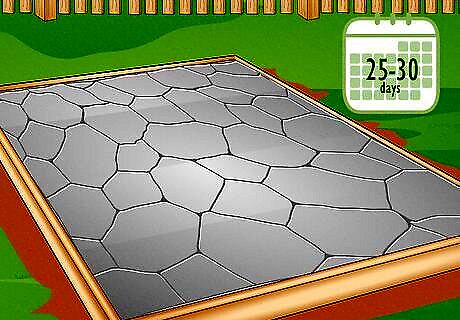
Allow the concrete to set. Most types of concrete are considered to have reached full strength after 25-30 days. Avoid stepping on or otherwise interacting the concrete for the first week or so. After that, you can begin introducing flooring, furniture, or other building materials. Concrete can dry to the touch in a matter of hours. However, it will continue to cure long after that. It may be helpful to put up a makeshift guardrail to keep anyone from wandering into the wet concrete.
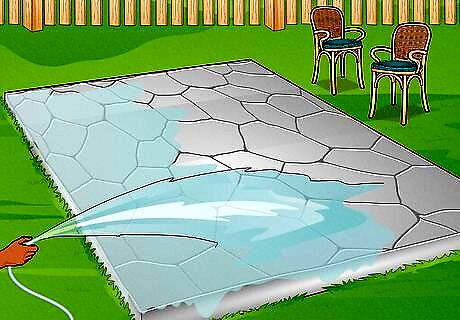
Keep exterior concrete wet. Spray down driveways, sidewalks and other outdoor surfaces with a water hose. Aim to rewet the fresh concrete 2-3 times a day for the first three days. A little moisture will keep the concrete from drying too rapidly, which can cause it to become brittle. Try not to oversaturate the concrete. A periodic light misting will do. Indoor concrete can be left exposed since constant temperature conditions make it less likely for it to lose water or dry unevenly.















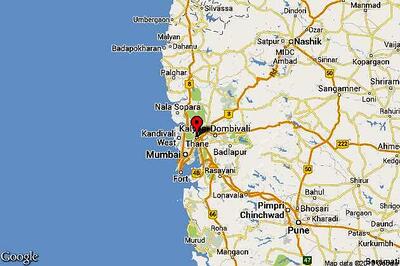




Comments
0 comment